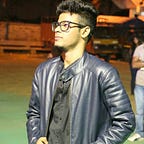Case study: Match-making to find freelancers
Problem Statement 🤔
Design a product experience that would help people find and hire the right designer for their projects. Design the experience from the perspective of the person who is looking to hire a freelancer. We are looking for you to identify pain points in the “finding the right designer for your project” journey and to find ways to solve those pain points.
Goals 🎯
- Finding user pain points and user behavior using UX Research Methodologies.
- Finding MVP features for the app.
- Solving problem with Hi-Fi Prototype.
- Testing the prototype with users.
UX Research 🔭
Secondary Research
I started off googling and finding statistics about Freelancing in India so that I can validate my assumptions on basis of reading blogs, articles, and reliable statistics that were already available on the Internet.
- As per Wikipedia, by 2020, 50% of workers are expected to go freelance. Currently, there are 15 million freelancers in India. Again as per some reports, the number of freelancers in India will grow to a whopping $20–30 billion by 2025. Source
- According to the 2020 Freelancer Income Report by Payoneer, a global digital payments platform, Indian freelancers work for an average hourly rate of $18, while globally the average hourly rate is $21. Source
- Freelancers in India have been boosting the growth of startups in a big way. As a new company, startups are usually not in a position to hire a highly-skilled workforce permanently, which is why they are looking at the massive talent pool available in the freelance sector.
- Steven Reubenstone, Founder of Collaborizm, an online collaborative community-based in Miami, US, says that 75 percent of the 115,000 individuals on the platform are freelancing from India. source
Primary Research
I interviewed 5 people to validate the idea of such an app, taking into account Don Norman’s ideology that it is possible to learn about 80% of errors, problems, and behavior from the first 5 users.
Each interview took approximately 30 minutes and included topics to get to the core of the user’s goals and pain points.
- 🔬 80% of users experienced trouble finding the right freelancers.
- ⏳ 100% of users experienced trouble tracking freelancer’s time.
- 💰 60% of users experienced trouble tracking their money spent on freelancers
- 🙊 40% of users experienced a violation of NDA.
Affinity Sorting
After interviewing the users, I wrote every observation on a sticky note. Then I did Affinity Sorting by grouping similar kinds of observations to find patterns and themes in user behavior and situations.
This helped me create User Personas and User Journey Maps, which turned out to be really useful while listing out the features for Minimum Viable Product.
User Persona
User Journey Map
MVP 🌟
Features:
- A faster way of finding freelancers
- Time Tracker, to track freelancer’s time
- Payment Tracker, to track client’s payment.
Solutions 💁🏻♂️
To speed up the process of finding freelancers, we need to understand client’s needs and expectations via the signup/onboarding. More like one on one conversation.
Solution 1
A faster way of finding freelancers :
- Recommends top 3% of freelancers according to client's needs.
- clients can view portfolio projects.
- Tinder swipe interaction to hire freelancers.
Solution 2 - Time Tracker ⏲
Firstly I listed all the features client would want to see in the time tracker.
Later, I used MoSCoW Framework to prioritize all the features listed above.
Solution 3 - Payment Tracker 💸
“People ignore design that ignores people” — Frank Cimero (Author of shape of design)
Usability Testing 🧪
Since this app design was a concept project with no real development happening, I tested the working prototype of wireframes with 5 users to get a measurement of effectiveness, efficiency and satisfaction.
I gave each users 3 tasks :
Task 1:
- Use the app and find Visual Design freelancers.
- View their Projects.
- Hire one Freelancer.
Task 2:
Track your payment (I did this to check discoverability)
Task 3:
Track Freelancer’s time (I did this to check discoverability)
Results 👍
Effectiveness
Effectiveness is the accuracy and completeness with which users achieve specified goals.
Success Rate: 93% (14 out of 15 tasks were completed successfully).
Efficiency
Efficiency is the accuracy and completeness of goals achieved in relation to resources (here, time).
The average time taken to complete each task: 38 sec (Task 1), 42 sec (Task 2), 5 sec (Task 3).
Satisfaction
Freedom from discomfort and positive attitude towards the use of the system.
I calculated satisfaction using the System Usability Score (SUS). SUS Score should be more than 60 to achieve Satisfaction.
SUS for all 5 users: 82.5, 85, 87.5, 85, 82.5
My design succeeded in all three aspects of Usability, i.e., Effectiveness, Efficiency and Satisfaction.
Conclusion 🎊
The users had a great role to play throughout the design process. I realized that a lot of important aspects go un-noticed and un-catered if we design without involving users.
A big thanks to the people who participated in the interviews and gave me feedback to improve my design.
Did you know 😲
You can give up to 50 Claps for an article? Click/Tap and hold the clap button for a few seconds and BAM! Try it out 😋
